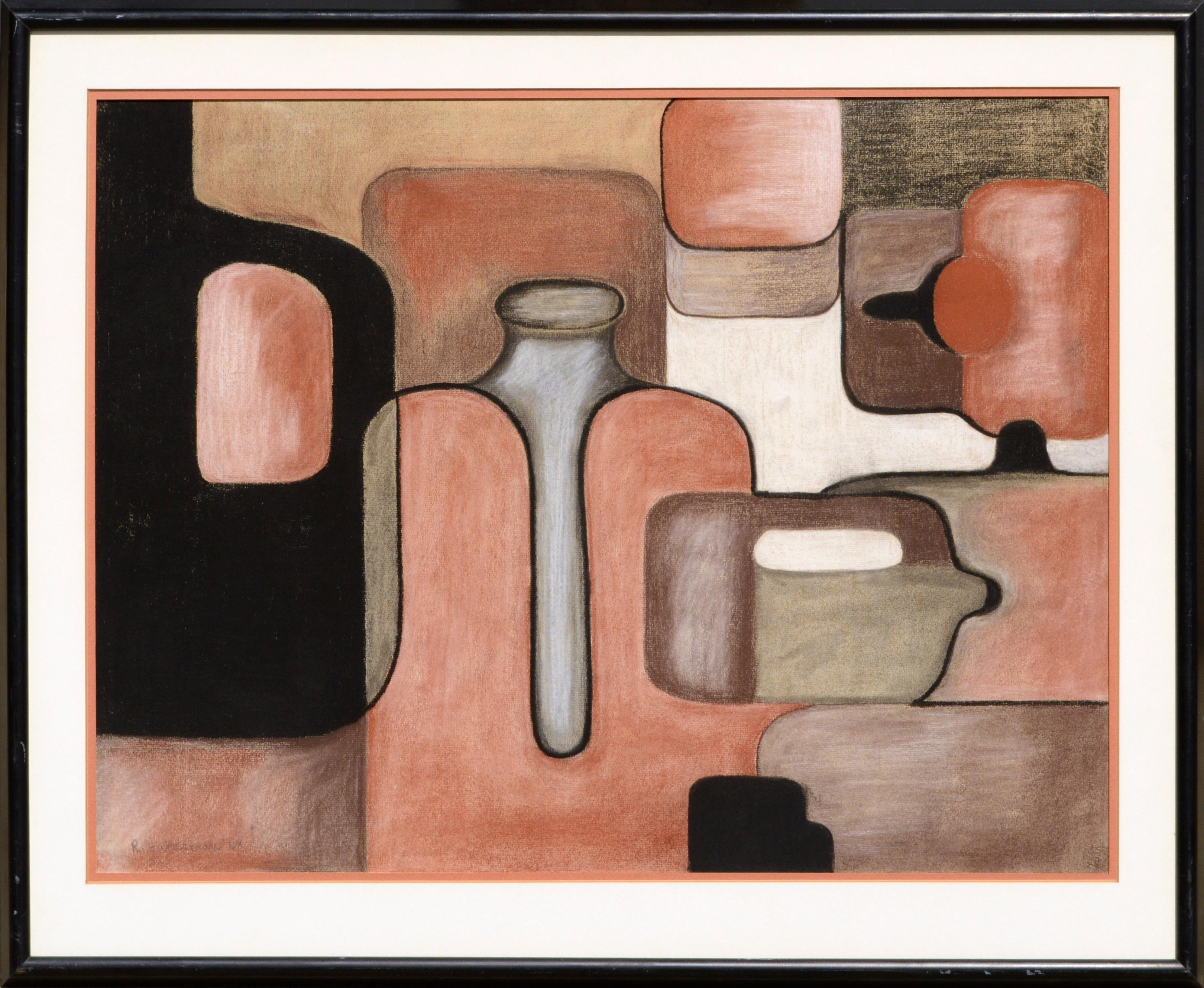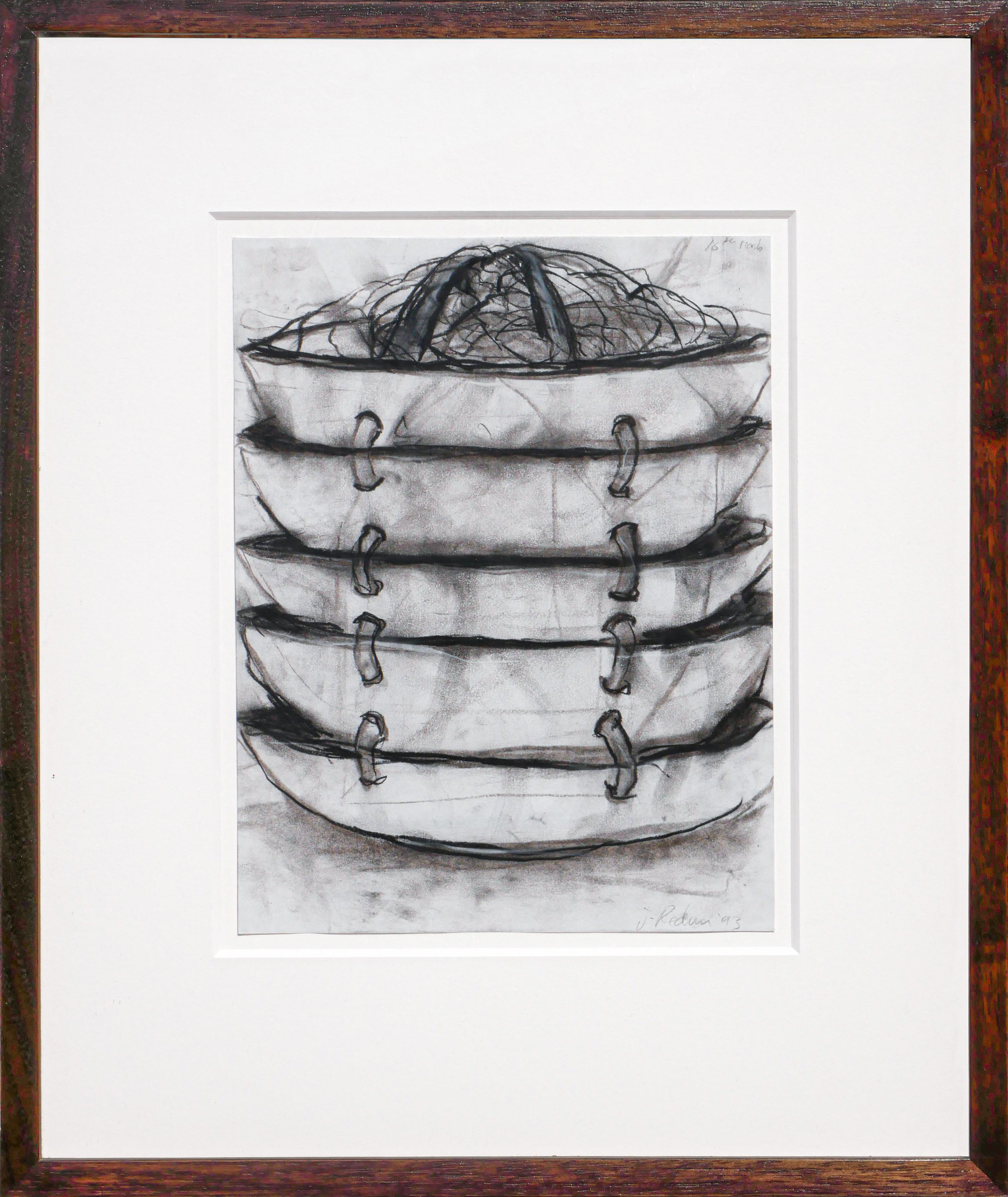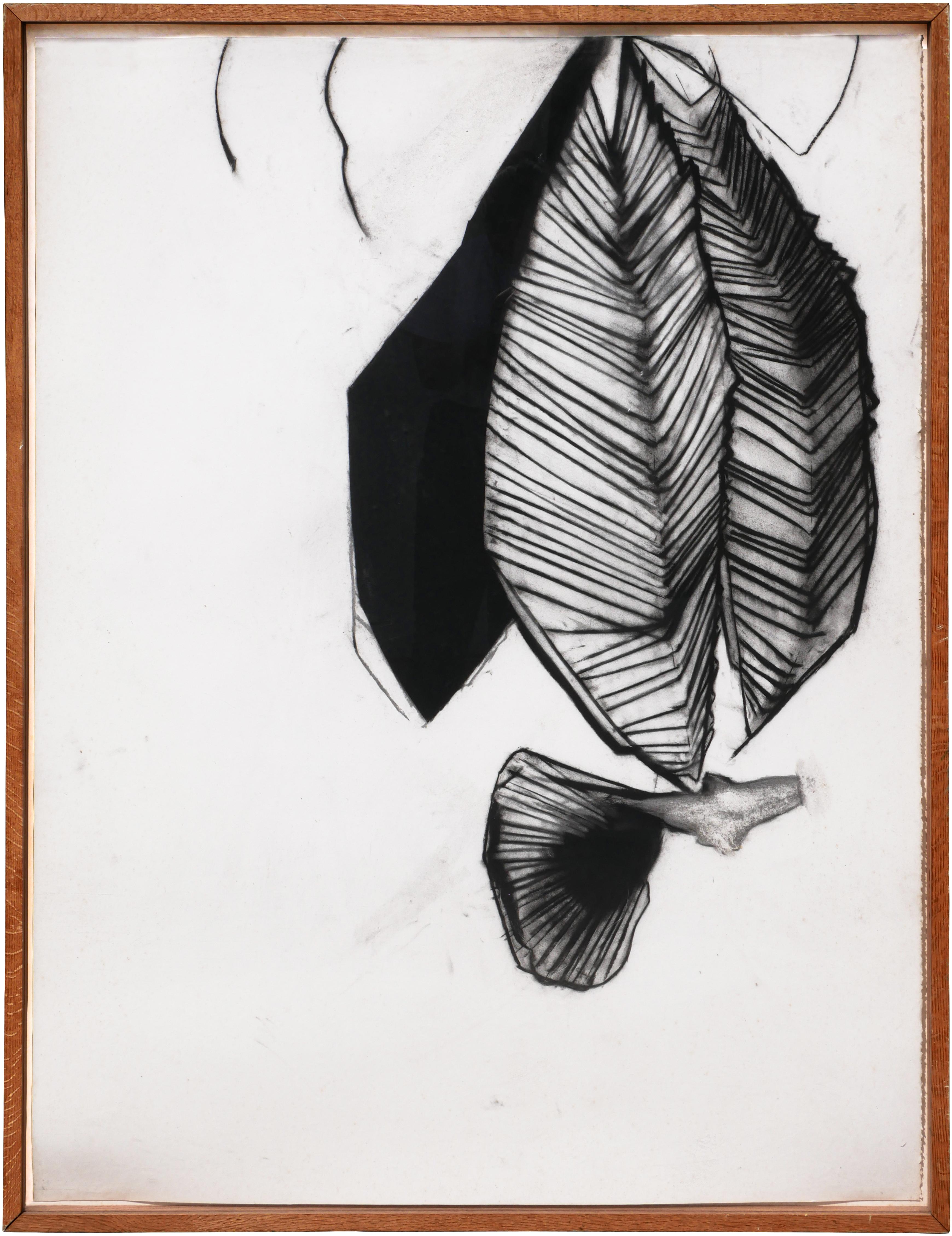Sonia DelaunaySonia Delaunay - Original Watercolor on paperCirca 1930
Circa 1930
About the Item
- Creator:Sonia Delaunay (1885 - 1979, French)
- Creation Year:Circa 1930
- Dimensions:Height: 8.27 in (21 cm)Width: 8.27 in (21 cm)Depth: 0.04 in (1 mm)
- Movement & Style:
- Period:
- Condition:
- Gallery Location:Collonge Bellerive, Geneve, CH
- Reference Number:1stDibs: LU16124266242
Sonia Delaunay
Pioneering 20th-century abstract artist Sonia Delaunay was known for ignoring the distinction between fine art and applied design. Her body of work encompassed not only paintings and prints but also book illustrations, women’s and men’s fashions, costumes for theater and dance, film sets, wallpaper, furniture and interior decor. More than an expression of her prolific talent, this varied output was her way of erasing the boundary between life and art.
Born Sara Elievna Stern in 1885 to a working-class Jewish family in Ukraine (then part of the Russian Empire), she was adopted as a child by a wealthy maternal uncle in St. Petersburg, who saw to her well-rounded education. There, she picked up the nickname Sonia.
At the age of 18, she left Russia for Germany to study painting, and in 1905, she landed in Paris, where she enrolled in art school. She soon dropped out but continued creating art, producing canvases strongly influenced by Fauvism. Following a brief marriage to gallery owner Wilhelm Uhde, she married fellow artist Robert Delaunay (1885–1941) in 1910. After the birth of her son, Charles, in 1911, she crafted a patchwork crib cover that she considered her first truly abstract piece.
No matter the medium, Delaunay’s passion was color. She and her husband were the main exponents of Orphism, a branch of Cubism defined by abstract compositions and bright shades. They saw their creations as experiments in Simultanéisme, or Simultanism, a color theory based on the work of scientist Michel Eugène Chevreul (1786–1889), who studied the ways in which a given hue can look different depending on the ones around it.
The Delaunays noted that certain pairings seemed to generate a vibration in the eye of the beholder. They felt that this movement captured the dynamism of modern urban life. The couple generally expressed the ideas underpinning Simultanism in their work with flat, overlapping panes of color. In fact, Sonia’s cradle cover melded their tenets with the traditions of Russian-peasant patchwork (also a big Constructivist inspiration).
Seeking to integrate Simultanism into all aspects of life, she designed other abstractly patterned furnishings for their home, which had become a gathering place for the avant-garde, and she worked the designs into their clothes, too, which she and Robert would wear throughout the city and to dance halls — behavior that today would likely be described as performance. In addition to performance, Sonia’s work presaged many other avant-garde movements, such as kinetic art and Op art.
After the upheavals of World War I and the 1917 Russian Revolution, Delaunay retooled herself and opened a business. Keeping her devotion to color juxtaposition front and center, she launched a fabric and fashion atelier where she created textiles, wearable pieces, interior decor and furniture, sometimes collaborating with cabinetmaker Adolphe Chanaux.
Clients who may have found an abstract painting intimidating or inaccessible could enjoy the bright pattern on a cloche-and-scarf set Delaunay created or the striped handbag she designed. In this way, she brought her art into their everyday lives. Her colorful abstract design on a textile or rug could very well have been applied to one of her canvases and hung on a wall or vice versa.
While many women artists of the period were herded away from the fine arts and toward crafts (think Anni Albers), Delaunay was able to do it all. And what’s also so appealing about her oeuvre, to contemporary eyes, is the sense that Delaunay pursued everything — be it painting or fashion or costuming or furniture or graphic design — with equal vigor, without making distinctions between mediums.
Find Sonia Delaunay art for sale on 1stDibs.
- ShippingRetrieving quote...Ships From: Collonge Bellerive, Geneve, Switzerland
- Return PolicyA return for this item may be initiated within 7 days of delivery.
- Jacques Germain -Untitled - Original Signed InkBy Jacques GermainLocated in Collonge Bellerive, Geneve, CHJacques GERMAIN (1915-2001) Untitled Circa 1970 Ink on Paper Signed J.G Dimensions: 20 x 30 cm Born in Paris in 1915, worked with Fernand Léger and Amédée Ozenfant at the Acadé...Category
1970s Abstract Expressionist Abstract Drawings and Watercolors
MaterialsInk
- Jacques Germain -Untitled - Original Signed DrawingBy Jacques GermainLocated in Collonge Bellerive, Geneve, CHJacques GERMAIN (1915-2001) Untitled Circa 1970 Dimensions: 25 x 18 cm Pencil on Paper Signed J.G Born in Paris in 1915, worked with Fernand Léger and Amédée Ozenfant at the Acad...Category
1970s Abstract Expressionist Abstract Drawings and Watercolors
MaterialsInk
- Geneviève Claisse - Kinetic Composition - Original Signed LithographBy Geneviève ClaisseLocated in Collonge Bellerive, Geneve, CHGeneviève Claisse - Kinetic Composition - Original Signed Lithograph Publisher Stamp Edition: EA Geneviève CLAISSE, born in 1935 in France, a relative to Auguste Herbin. She is recognized today as one of the most important geometrical abstract French artist of the 1970s. Her approach to painting was influenced by reading Art d’Aujourd’hui, Tribune of Geometrical Abstraction. 1958 First solo exhibits in the Galerie Caille in Cambrai and Galerie Hybler in Paris. 1961 First exhibit in the Galerie Denise René in Paris where she regularly exhibited in the following years. 1965 + Focused work on color (Cercles, ADN) 1967 Museum of Fine Arts of La Chaux-de-Fonds. Biennale of Paris. 1968 “Art...Category
2010s Abstract Geometric Abstract Prints
MaterialsLithograph
- Sandy Hunter Petyarre - Aboriginal Art PaintingBy Sandy Hunter PetyarreLocated in Collonge Bellerive, Geneve, CHSandy Hunter Petyarre 1994 150 x 90 cm Group Anmatyerre - Utopia - Central Desert Sandy Hunter Petyarre was born in 1953. She is one of the few artists to continue painting w...Category
Abstract Geometric Abstract Paintings
- Alexander Calder - Original Lithograph - from "Derrière le miroir"By Alexander CalderLocated in Collonge Bellerive, Geneve, CHAlexander Calder - Original Lithograph - from "Derriere le Miroir"Behind the Mirror 1976 Framed Dimensions: 38 x 56 cm Source: Derrière le miroir (DLM), n°141, 1976 Alexander Cald...Category
1970s Abstract Geometric Abstract Prints
MaterialsLithograph
- Alexander Calder - Original Lithograph - from "Derrière le miroir"By Alexander CalderLocated in Collonge Bellerive, Geneve, CHAlexander Calder - Original Lithograph - from "Derriere le Miroir"Behind the Mirror 1976 Condition: Good Condition Dimensions: 38 x 56 cm Source: Derrière le miroir (DLM), n°141, 1...Category
1970s Abstract Geometric Abstract Prints
MaterialsLithograph
- Abstract Geometric Terracotta Jugs, Mid Century Modern Abstracted Still LifeLocated in Soquel, CABold mid century modern abstracted pastel on paper still life of several terra cotta jugs and vessels distilled down to their most basic shapes and ar...Category
1960s Abstract Geometric Abstract Drawings and Watercolors
MaterialsPaper, Pastel
- 06A411By Hans Van MeeuwenLocated in Boston, MAArtist Commentary: Books often appear in my work. Books are those containers of wisdom, of knowledge, of culture Words used to describe the piece: representational, books, humor, s...Category
21st Century and Contemporary Abstract Impressionist Abstract Drawings a...
MaterialsPaper, Color Pencil
- "Biomorphic Flowers" original watercolor painting by Sylvia SpicuzzaBy Sylvia SpicuzzaLocated in Milwaukee, WIIn the 1960s, Sylvia Spicuzza made several watercolor abstractions with biomorphic qualities like the one presented here. This example takes on the appearance of a flower, while the ...Category
1960s Abstract Abstract Drawings and Watercolors
MaterialsWatercolor
- Vibrant abstract picture of jar and flowers by Modern British artist Ewart JohnsLocated in Petworth, West SussexA beautiful and peaceful abstract still life painting done in pastel. Vibrant colours such as red, yellow, blue and green burst through the picture to create a living and loving peac...Category
20th Century Abstract Abstract Drawings and Watercolors
MaterialsPastel
- Monochromatic Still Life Drawing of Stacked BowlsBy Janice RedmanLocated in Houston, TXMonochromatic abstract still life drawing by Janice Redman. The piece depicts what appears to be a stack of bowls joined by strings. Signed by the artist at the lower right corner. Framed and matted in a modern wooden frame. Dimensions With Frame: H 11 in. x W 8.75 in. Artist Biography: Janice Redman, sculptor, was born in Huddersfield, England and received her BFA from Kingston University, Surrey, and her MFA from the University of Ulster in Belfast, Northern Ireland. She is a former Fellow of the Fine Arts Work Center In Provincetown, Massachusetts,and has been the recipient of many awards, including The Hassam, Speicher, Betts and Symons Purchase Prize from the American Academy of Arts and Letters and a Massachusetts Cultural Council award in sculpture. Her residency programs include Yaddo in Saratoga Springs, New York,and the Core Program at the Museum of Fine Arts In Houston, Texas. Redman’s work has been shown nationally and is represented by Clark Gallery in Lincoln, Massachusetts. Her work can be found in the permanent collections of the DeCordova Museum and Sculpture Park in Lincoln and the Eli and Edythe Broad Art Museum in East Lansing, Michigan. "My work,” Redman says, “is rooted in my everyday experience and my personal history. My mother was a seamstress and a lace maker; my father restored antique clocks...Category
1990s Abstract Still-life Drawings and Watercolors
MaterialsPencil, Paper, Graphite
- "Fernando's Sleeve" Black and White Abstract Organic Shape Charcoal DrawingLocated in Houston, TXBlack and white abstract charcoal drawing by Houston artist Paul Forsythe. The work features a large, abstract, organic shape in the upper right corner of the composition. Currently ...Category
1990s Abstract Abstract Drawings and Watercolors
MaterialsPaper, Charcoal, Pencil





